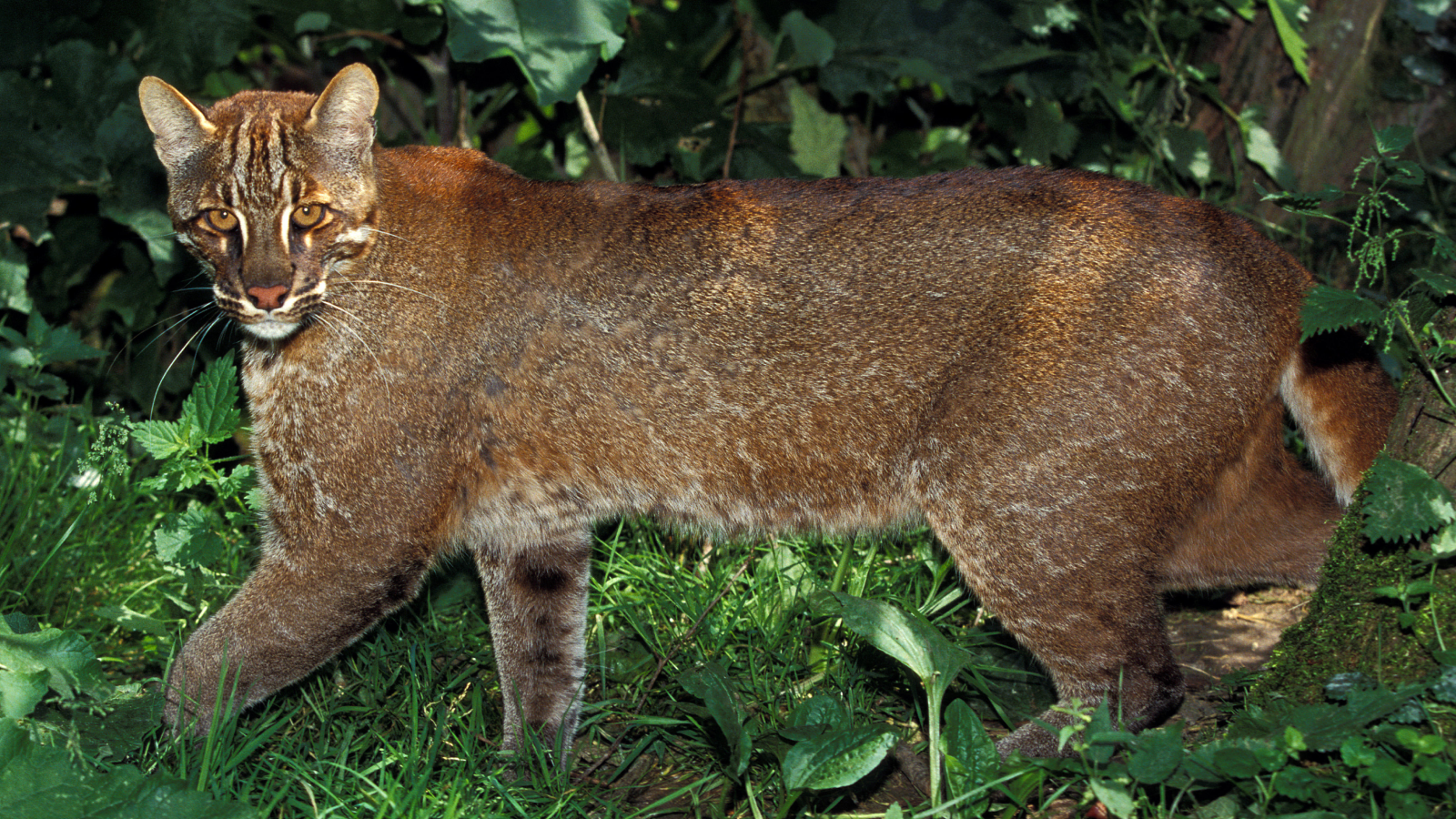Asian golden cat: The 'feline of many costumes' that plucks birds before eating them
The Asian golden cat is an elusive creature endemic to South and Southeast Asia. It is known to take down prey much larger than itself, including buffalo calves, baby deer and small muntjacs.

Name: Asian golden cat (Catopuma temminckii)
Where it lives: China, Nepal, Southeast Asia and northeastern India
What it eats: Birds, reptiles, small mammals like rodents and larger mammals like young deer
The Asian golden cat, also known as the Asiatic golden cat or Temminck's cat, is a feline endemic to some of Asia's densest forests. It comes in a wide palette of colors, plucks birds before eating them and — despite weighing no more than 35 pounds (16 kilograms), or two to three times as much as a domestic cat — is bold enough to kill prey such as buffalo calves, small muntjacs and baby deer.
Asian golden cats are elusive creatures rarely seen in the wild. Camera trap images indicate that the most common coat colors for the species are golden-brown and reddish-brown, but gray, melanistic, pale cinnamon and patterned, ocelot-like forms also exist, explaining why the species is sometimes described as a "feline of many costumes." According to the International Society for Endangered Cats (ISEC), there is no known link between coat color and the geographic distribution of Asian golden cats.
Although it prefers to hunt on the ground, the Asian golden cat can also climb trees. It kills larger prey with a strong bite to the neck, prowling sub-tropical and tropical forests at various times of day. While researchers long thought that Asian golden cats are nocturnal, more recent evidence suggests these cats have irregular activity patterns that may peak at twilight.
The species can live up to 20 years and at altitudes ranging from sea level to 14,050 feet (4,282 meters), according to a 2016 biodiversity survey in Bhutan. This survey and others showing Asian golden cats living at very high elevations suggest highlands may be important habitat for the species.
Posted by DNP1362 on
Asian golden cats have also been spotted in open areas with rocky tracts, and they are even known as "rock cats" in parts of China, according to the ISEC. Their ranges are about 20% larger than those of the clouded leopard (Neofelis nebulosa), despite the two species exhibiting similar behaviors and overlapping in their distribution.
But as a result of their preference for forest habitats, Asian golden cats are especially vulnerable to deforestation, which has caused a huge loss of habitat for the species. Southeast Asian forests have some of the highest deforestation rates in the world due to the expansion of crops like oil palm, coffee and rubber, according to the ISEC.
Asian golden cats are also threatened by illegal hunting for their pelts and bones, which are used in traditional medicine, and for their meat, which is considered a delicacy in some regions, according to the ISEC. Where Asian golden cats come into contact with livestock such as sheep and goats, the predators sometimes kill farmers' animals, leading to retribution killings, the society says.
Get the world’s most fascinating discoveries delivered straight to your inbox.

Sascha is a U.K.-based staff writer at Live Science. She holds a bachelor’s degree in biology from the University of Southampton in England and a master’s degree in science communication from Imperial College London. Her work has appeared in The Guardian and the health website Zoe. Besides writing, she enjoys playing tennis, bread-making and browsing second-hand shops for hidden gems.
You must confirm your public display name before commenting
Please logout and then login again, you will then be prompted to enter your display name.
